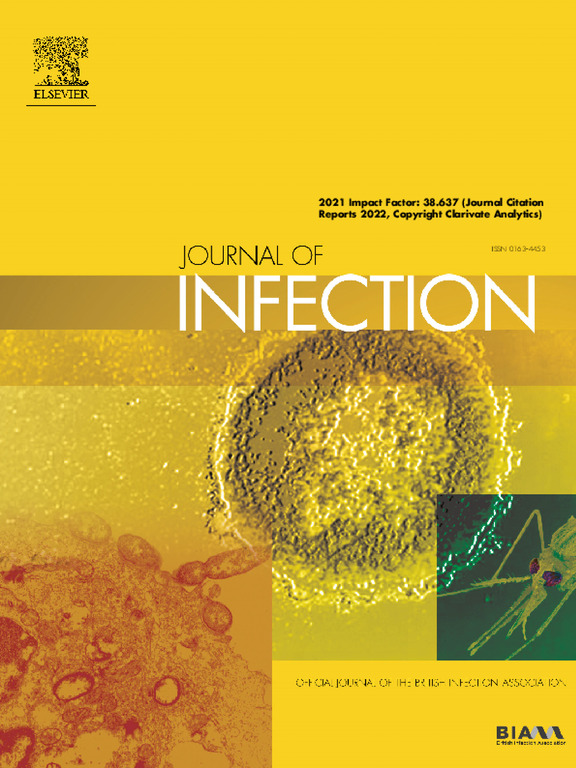Novel imported clades accelerated the RSV surge in Beijing, China, 2023-2024
IF 11.9
1区 医学
Q1 INFECTIOUS DISEASES
引用次数: 0
Abstract
Objectives
Despite the optimization of the zero-COVID policy in late 2022, there was a subsequent increase noted in the number of respiratory syncytial virus (RSV) cases in Northern China. In this study, we investigated and characterized the dynamics of this surge at the genomic level in Beijing, China.
Methods
Patients with acute respiratory tract infections (ARTIs) were enrolled from 35 sentinel hospitals in Beijing, China. Epidemiological investigations, G gene amplification, and whole-genome sequencing were performed, followed by epidemiological analysis, imported clade detection, and mutation identification. We also combined global data to illustrate the biological and epidemiological characteristics of the emerging clades.
Results
A total of 60,423 patients with ARTIs were recruited between January 2015 and January 2024. The RSV peak observed in the winter of 2023 was the highest in the past 9 years. Two novel imported clades, A.D.5.2 and B.D.E.1, were detected for the first time in China. This surge was mainly driven by B.D.E.1, which exhibited a significantly higher proportion of older individuals both in Beijing and globally. Seven non-synonymous mutations in B.D.E.1 were found in Beijing. B.D.E.1 had more sites suffering from positive selection than its parent.
Conclusions
The novel imported clade B.D.E.1 accelerated an unprecedented RSV surge in Beijing, presenting noteworthy epidemiological and biological characteristics. Continuous RSV genome monitoring has important implications for RSV outbreak identification, genetic diversity tracking, vaccine development, and strategy implementation.
2023-2024 年,新的输入支系加速了中国北京 RSV 的激增。
目标:尽管 2022 年末优化了零感染病例政策,但随后发现华北地区呼吸道合胞病毒(RSV)病例数量有所增加。在本研究中,我们在基因组水平上调查并描述了中国北京这一激增的动态:方法:从中国北京的 35 家哨点医院招募急性呼吸道感染(ARTI)患者。进行流行病学调查、G 基因扩增和全基因组测序,然后进行流行病学分析、进口支系检测和突变鉴定。我们还结合全球数据说明了新出现支系的生物学和流行病学特征:结果:2015 年 1 月至 2024 年 1 月期间,共招募了 60423 名 ARTIs 患者。2023年冬季观察到的RSV高峰是过去9年中最高的。中国首次检测到两个新的输入支系:A.D.5.2 和 B.D.E.1。这种激增主要是由 B.D.E.1 推动的,它在北京和全球都表现出明显较高的老年个体比例。在北京,B.D.E.1 中发现了 7 个非同义突变。B.D.E.1比其父本有更多的位点受到正选择:结论:B.D.E.1新输入支系加速了北京前所未有的RSV飙升,呈现出值得注意的流行病学和生物学特征。持续的 RSV 基因组监测对 RSV 疫情识别、遗传多样性追踪、疫苗开发和策略实施具有重要意义。
本文章由计算机程序翻译,如有差异,请以英文原文为准。
求助全文
约1分钟内获得全文
求助全文
来源期刊

Journal of Infection
医学-传染病学
CiteScore
45.90
自引率
3.20%
发文量
475
审稿时长
16 days
期刊介绍:
The Journal of Infection publishes original papers on all aspects of infection - clinical, microbiological and epidemiological. The Journal seeks to bring together knowledge from all specialties involved in infection research and clinical practice, and present the best work in the ever-changing field of infection.
Each issue brings you Editorials that describe current or controversial topics of interest, high quality Reviews to keep you in touch with the latest developments in specific fields of interest, an Epidemiology section reporting studies in the hospital and the general community, and a lively correspondence section.
 求助内容:
求助内容: 应助结果提醒方式:
应助结果提醒方式:


